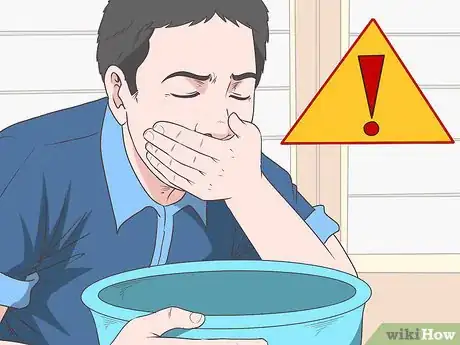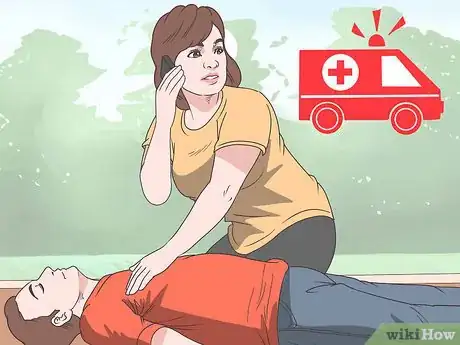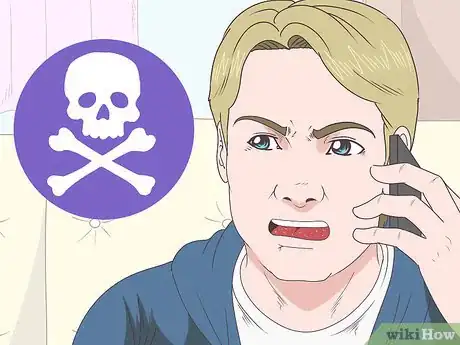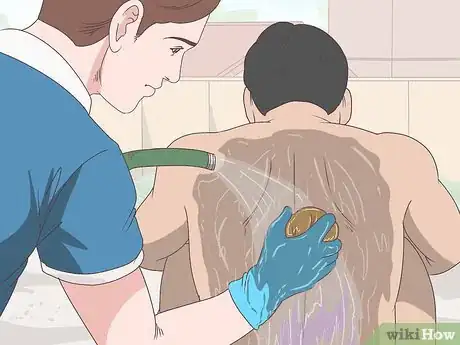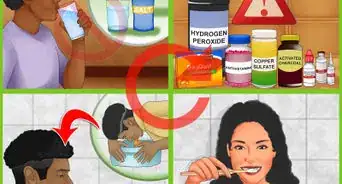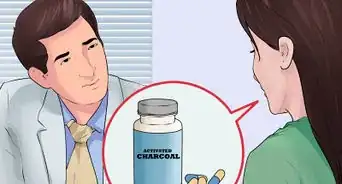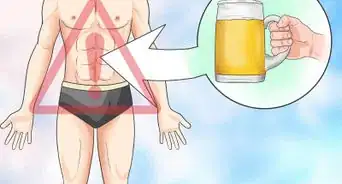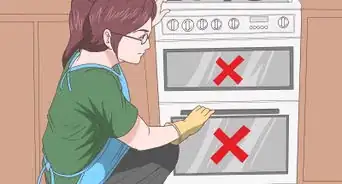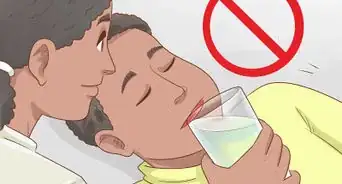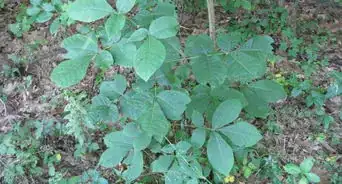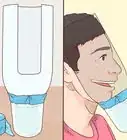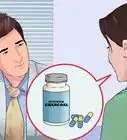This article was medically reviewed by Jonas DeMuro, MD. Dr. DeMuro is a board certified Pediatric Critical Care Surgeon in New York. He received his MD from Stony Brook University School of Medicine in 1996. He completed his fellowship in Surgical Critical Care at North Shore-Long Island Jewish Health System and was a previous American College of Surgeons (ACS) Fellow.
This article has been viewed 83,425 times.
The American Academy of Pediatrics states that each year approximately 2.4 million people, with over half being under age six, ingest or have contact with poisonous substances. Poisons can be breathed in, swallowed or absorbed through the skin. The most dangerous poisonous culprits include medicines, cleaning products, liquid nicotine, antifreeze and windshield-wiper fluid, pesticides, gasoline, kerosene and lamp oil, among others. The effects of these and many other various poisons are so varied that it is often a challenge to discern what has taken place, which delays diagnosis in many cases. Any suspected poisoning should be dealt with first and foremost by calling Emergency Services or Poison Control immediately.
Steps
Getting Medical Assistance
-
1Know the symptoms of poisoning. The signs of poisoning can depend on the type of poison that was ingested, such as whether it was pesticides, medications, or small batteries. Moreover, the general symptoms of poisoning often present similarly as those of other medical conditions, including seizures, insulin reactions, strokes, and intoxication. One of the best ways to know if poison has been ingested is in fact to look for clues like empty packages or bottles, stains or odors on the person or in a nearby spot, and items out of place or cupboards opened. That said, there are still some physical symptoms you should look out for, including:[1]
- Burns and/or redness around the mouth area
- Breath that smells of chemicals (gasoline or paint thinner)
- Vomiting or regurgitating
- Trouble breathing
- Drowsiness or sleepiness
- Mental confusion or other altered mental status
-
2Determine whether the victim is breathing. Look for a rise in the chest area; listen for the sound of air coming in and out of the lungs; feel for air by hovering the side of your face just above the person's mouth.
- If the person is not breathing or showing other signs of life, such as moving or coughing, administer CPR, and call emergency services or have someone else nearby call.[2]
- If the victim is vomiting, especially if he is unconscious, turn his head to the side to prevent choking.
Advertisement -
3Call emergency services. Call 911 or your local emergency number if the person is unconscious and you suspect poisoning or if you suspect a medication, drug or alcohol overdose (or any combination of these). In addition, call 911 immediately if you note the person exhibiting the following severe symptoms of poisoning:[3]
- Fainting
- Difficulty breathing or cessation of breathing
- Agitation or restless
- Seizures
-
4Call Poison Help. If you are concerned that you have a potential poisoning case on your hands and the person remains stable and is not showing symptoms, call Poison Help at 1-800-222-1222 in the United States. If you know the number for your regional poison control center, then call it for assistance. Poison control centers are excellent resources for poisoning information and, in many situations, may advise that in-home observation and treatment (see Part 2) is all that's needed.[4]
- Poison control center numbers for different areas may vary, but a simple web search should produce the appropriate number for your location. This is a free service that can prevent you from having to pay the costly fees associated with emergency rooms and doctor visits.
- Poison control is open all day, every day. The poison control representative will walk you through the step-by-step process of treating someone who has swallowed poison. The representative may give you home treatment suggestions but may also tell you to immediately take the victim to the emergency room. Do exactly what you are told and nothing more; poison control representatives are highly skilled in assisting with ingested poisons.
- You can also use the the website for Poison Control to get specific guidance on what you should do. However, only use this website if: the person is between the ages of 6 months and 79 years old, the person is asymptomatic and otherwise helpful, the person is not pregnant, the poison has been swallowed, the suspected poison is drugs, medicines, household products or berries, and the ingestion was unintentional and only occurred once.
-
5Be ready with important information. Be prepared to describe the person's age, weight, symptoms, additional medications he is taking, and any information available about what has been ingested to the medical authorities. You'll also need to give the person on the phone the address of where you are.[5]
- Be sure as well to gather the labels or actual packaging (bottle, packet, etc.) or whatever was ingested. Try to give your best estimation of how much or many of the item was ingested.
Providing Immediate Aid
-
1Deal with ingested or swallowed poisons. Have the person spit out anything remaining in his mouth and ensure that the poison is out of reach now. Do NOT make the person vomit and do NOT use any syrup of ipecac. Though this used to be standard practice, the American Academy of Pediatrics and the American Association of Poison Control Centers have changed their guidelines to warn against doing this and instead recommend notifying EMS or Poison Control and following their explicit instructions.[6]
- If the person has swallowed a button-cell battery, then called EMS immediately for treatment in a hospital emergency room as soon as possible. The acid from the battery can burn your child's stomach within two hours so prompt treatment is essential.
-
2Attend to poison in the eye(s). Gently flush out the affected eye with copious amounts of cool or lukewarm water for 15 minutes minutes or until medical assistance arrives. Try to pour a steady stream of water into the inner corner of the eye. This will help dilute the poison.[7]
- Allow the person to blink and don't force the eye open as you pour the water in.
-
3Cope with inhaled poisons. When dealing with poisonous fumes or vapors, like carbon monoxide, for example, the best thing to do until help arrives is to get outside into the fresh air.[8]
- Try to ascertain what chemical was inhaled so that you can tell Poison Control or Emergency Services in order to determine further treatment or other next steps.
-
4Handle poison on the skin. If you suspect that the person's skin came into contact with a poisonous or hazardous substance, remove any contaminated clothing with medical gloves such as nitrile, which are resistant to most household chemicals, or another fabric to cover your hands from being affected. Rinse the skin for 15 to 20 minutes with cool to lukewarm water in a shower or with a hose.[9]
- Again, it's important to note what the source of the poison was in order to determine further treatment. For example, medical authorities need to know whether it was an alkali, acidic or other substance in order to assess the potential damage it can do to the skin and how to avoid or mediate that.
Warnings
- Despite the availability of ipecac and activated charcoal at most drugstores, the American Academy of Pediatrics and the American Association of Poison Control Centers no longer recommend home treatments, which can do more harm than good.[11] [12]⧼thumbs_response⧽
- Prevent poisonous items from being used incorrectly. Prevention is the best route to preventing poisoning. Lock up all medications, batteries, varnishes, laundry detergents, and household cleaning supplies in a cabinet, and always keep these items in their original containers. Read labels carefully to make sure that you understand the proper use for the items.[13]⧼thumbs_response⧽
References
- ↑ http://www.mayoclinic.org/first-aid/first-aid-poisoning/basics/art-20056657
- ↑ http://www.mayoclinic.org/first-aid/first-aid-poisoning/basics/art-20056657
- ↑ http://www.mayoclinic.org/first-aid/first-aid-poisoning/basics/art-20056657
- ↑ http://www.mayoclinic.org/first-aid/first-aid-poisoning/basics/art-20056657
- ↑ http://www.mayoclinic.org/first-aid/first-aid-poisoning/basics/art-20056657
- ↑ http://www.mayoclinic.org/first-aid/first-aid-poisoning/basics/art-20056657
- ↑ http://www.mayoclinic.org/first-aid/first-aid-poisoning/basics/art-20056657
- ↑ http://www.poison.org/actfast/firstaid.asp
- ↑ http://www.poison.org/actfast/firstaid.asp
- ↑ http://www.redcross.org/prepare/disaster/poisoning
- ↑ American Academy of Pediatrics, Guidelines, 2015
- ↑ http://www.mayoclinic.org/first-aid/first-aid-poisoning/basics/art-20056657
- ↑ http://www.redcross.org/prepare/disaster/poisoning
